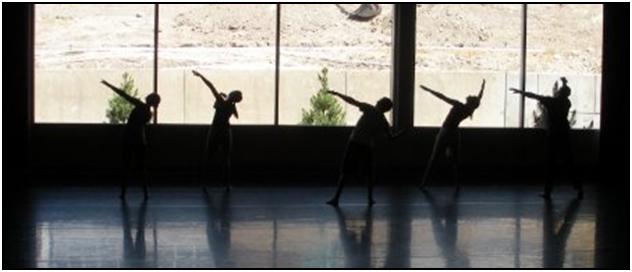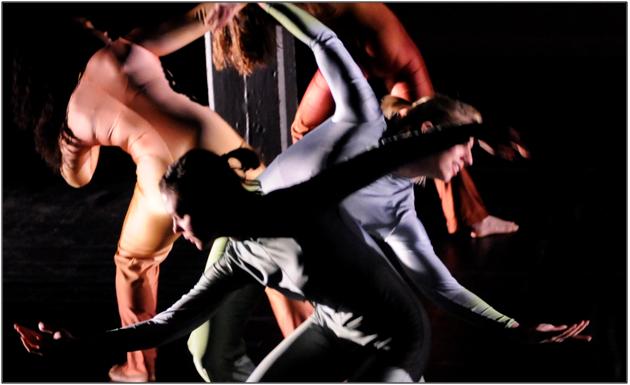Abstract
University students in Delaware, Texas, and Utah collaboratively created an original modern dance work exploring inner and outer landscapes. Human Kind is a dance that concerns metaphorical connections between land and the people that experience the land. Through projected images and stories created and told by the cast, it is a dance that celebrates the commonalities that exist among young people despite different locations, customs or beliefs.

Method: A Collaborative Creative Process
First, a blueprint of the dance was established, noting timing and theme for each part of the piece. The first section was to emphasize the land; we referred to that section as the outer landscape. We worked with landscape photographs from each state and explored shapes, both still and moving. The second section expressed each dancers’ individual inner landscape by means of a movement narrative. The narratives incorporated dance, spoken word, and photos. The final section merged geographical shapes and the personal stories of the entire cast to create a collage of landscapes.
Under the guidance of artistic director Mary Lynn Babcock, who led the Texas dancers, the three states worked separately to develop their own sections of choreography for the majority of the summer. Three days prior to the performance, the entire cast met in Provo, Utah to meld Human Kind together for the first time. Here, Babcock fused each of the dance sections to create one distinctive piece; she also incorporated a visual art component, which consisted primarily of a slideshow of landscape images from the three states that were digitally enhanced and projected onto a backdrop.

Performance
The dance was a success! The costume, inspired by our landscape photographs, displayed a array of warm, earthy tones. The outer landscapes appeared in dance, music, and images. Both the dancers and audience experienced the inner landscapes in the stories told. Finally, the third section united with the movement score brought the dance to a climatic build and a strong resolution. Human Kind was well received by the audience as not only beautiful and inspiring to watch, but also that the theme-based choreography really set the stage for the conference.
Reflections
Human Kind was a collaboration of artists, musicians, and dancers in three states from across the country. After the performance, the dancers involved completed a short questionnaire in order to provide constructive feedback for similar projects in the future. They discussed what could be improved, most notably that more clearly defined roles and communication of expectations would be beneficial. Each dancer also described various benefits from the process, especially observing how the dance ultimately brought everyone together, despite our diverse set of ages, backgrounds, and beliefs. We shared refreshing experiences on Utah mountain hikes and opened ourselves up to one another in our personal stories. Human Kind was a fulfilling experience, both personally and professionally.
Acknowledgements
The University of Delaware’s Arts and Humanities Scholars program, ArtsBridge America, Dr. Lynnette Overby, Dr. Mary Lynn Babcock, and Marilyn Barrett.